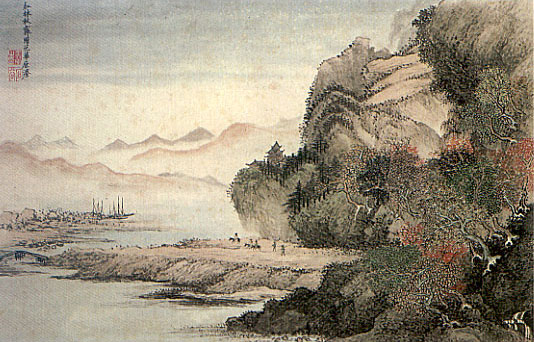Wang Hui (1632-1717) was a Chinese artist who is well known for his landscape paintings. Inspired by the works of past masters, Wang Hui developed his own methods and techniques, which reinvigorated the tradition of Chinese painting.
Wang Hui, the Chinese artist
Wang Hui was born in Suzhou. Right from a young age, he was recognized as a prodigy. At the age of 15, Hui came into contact with Wang Shimin, a famous artist. Impressed by the youngster’s brilliance, Shimin instructed Hui to copy all the famous ancient artwork at his family villa.
Hui complied and spent the next several years as a guest and retainer of Shimin. Thanks to Shimin’s influence, Hui was exposed to a large number of private collections that contained some of the finest artworks of China. Most of these collectors ended up becoming Hui’s patrons.
During much of the 1660s, Hui focused on mastering the calligraphic idioms of Yuan-era masters. By the late 1660s, his focus shifted toward descriptive idioms of Song Dynasty artists. Hui was hugely influenced by Ming-era painter Dong Qichang’s idea that involved transforming landscapes into calligraphic abstractions. All this time, Hui was looking for a way to synthesize the techniques and concepts of the masters of the past eras. During the 1670s, he began realizing this dream of artistic synthesis.

Hui started to reinterpret the tradition of towering vertical mountain paintings. In The Colors of Mount Taihang (1669), vertical mountains are depicted in a horizontal format on scrolls. The way Hui painted the thrusting mountain forms with strong, dynamic brushwork succeeds in conveying the idea of nature’s tectonic forces.
During the 1680s, Hui dedicated his time to creating even longer handscrolls, depicting paintings of various terrains. Instead of solely relying on calligraphic style, Hui’s paintings began including complex architectural elements as well. In 1684, Hui created a 60-foot-long handscroll, which was almost two times as long as his previous works.
In 1691, Hui was invited to paint a pictorial document of one of the journeys undertaken by the Kangxi emperor. He eventually created 12 massive handscrolls, with each of them measuring 40 feet to 80 feet in length. Put together, all 12 scrolls had a length of 740 feet. The work was completed on silk with the help of numerous assistants and included imagery of landscapes, architecture, and almost 30,000 figures. The work took 7 years to finish. After this work was completed, Hui moved away from the court and focused on his private life.
Creating copies of earlier Chinese artworks
Wang Hui was also an expert in creating copies of earlier artworks. “The idea of copying and learning from previous masters is more familiar in Western painting tradition. Wang apparently gets downplayed as academic and derivative by some critics, but he reached such a high level of refinement in his own synthesis of those influences that he is highly regarded in the eyes of others,” according to Lines and Colors.

Hui’s expertise in creating copies rested on his ability to emulate various painting styles. As such, Hui was commissioned by collectors all throughout his life to create copies of ancient masterpieces. Most of the copies bear Hui’s signature. However, Wang never reproduced the ancient works exactly as they were. He brought new life to old paintings through his own style of brushwork, which is why many people value his copies greatly.








